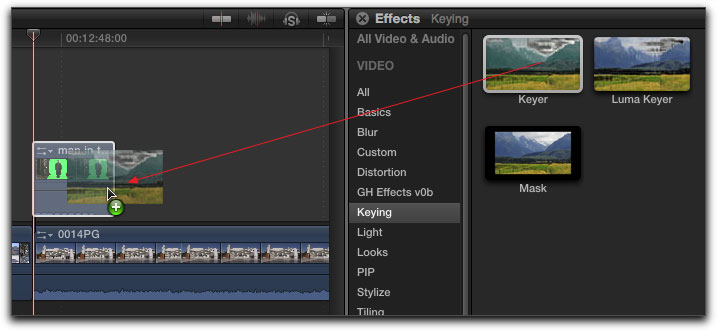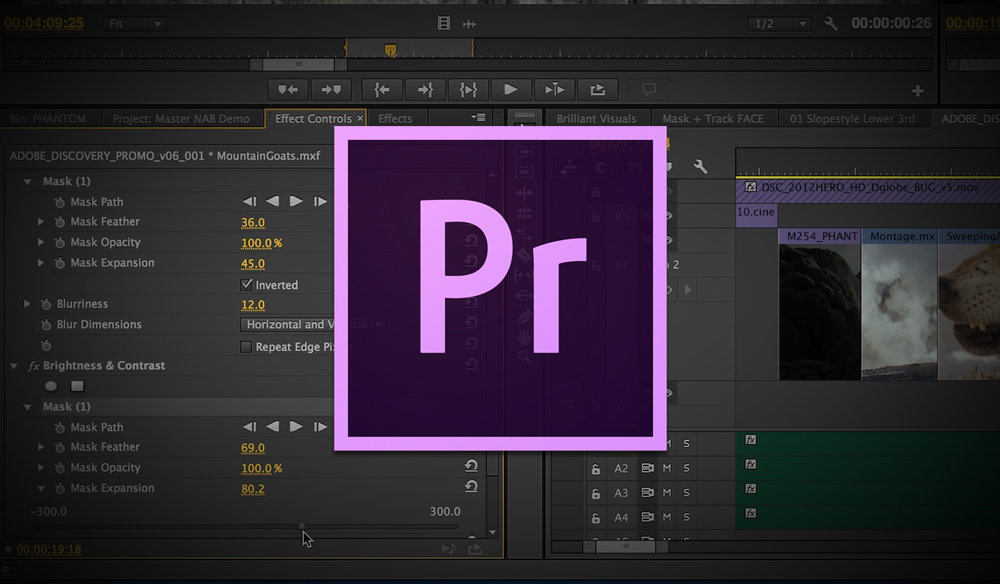

The qualifier is an eyedropper tool that selects the exact color hue you want to remove. Once you’re happy with your clip, select the color qualifier. For instance, you can adjust the clip’s saturation. You want to create a second node because this node allows you to make any adjustment you need to prior to keying out the green.
#CHROMA KEY FINAL CUT PRO KEY IN SERIAL#
You can do this by either hitting Option and S, or you can go into the top toolbar, select Node and click Add Serial Node. Go to the Color tab in DaVinci and create a new node. Step two: use the qualifier in the color tab Be sure to keep the green screen clip above the video or image you want to insert into the background. Place your two clips into DaVinci Resolve’s timeline. Keying in DaVinci Resolve Step one: set up your timeline You can also adjust the Luma settings if you have some green hued motion blur. Just be careful not to overdo it on the desaturation. You can increase the desaturation to remove the green spill left on your subject. To remove the edges, adjust the settings in Spill Suppression. Step three: clean it upĪt this stage, you may still have some green edges you need to clean up. Once you’re finished, you can see the final result by changing the channel back to the Composite channel. You want to work with these settings until you get a clean white and black. Here, you can adjust settings like the transparency, highlights and shadows of the Matte. If you still see parts left in your gram, head over to the Matte Generation tool. It’s best to use the Alpha channel because you get a clearer picture of the hues left. The black parts are the areas that will be removed. In the Alpha channel, the parts of your image that are white are the portions that will stay in the frame. You can get a better view of what green hues are currently being keyed out by switching the Output mode to the Alpha channel. Under the Ultra Key, select the color picker and select a portion of the green screen near your subject. It will then appear in the Video Effects tab. Drag the Ultra Key effect onto your clip in the timeline. Once you’re finished with making the circle, head to the Effects panel and search for the Ultra Key effect. The end goal is to leave out any sections on the outer corners of the frame that may not be the same green hue as the center. Think of this step like you’re cutting something out of a magazine for a collage. With the pen, draw a circle outline around your subject. Go to the Video Effects tab and select the pen tool. It’s now time to start keying out the green from your top clip. When you key out the green of the clip, the layer behind the clip will show through. Make sure to place the green screen clip in the layer above the clip you want to swap into the background. To start, import your clips into Premiere Pro’s timeline. Keying in Premiere Pro Step one: place your clips into the timeline Let’s go over the process of chroma keying in three popular applications: Premiere Pro, DaVinci Resolve and Final Cut Pro. While the process is similar in a lot of them, they each have some variations to their workflows.

#CHROMA KEY FINAL CUT PRO KEY IN SOFTWARE#
There are a lot of great post-production software out there that have green screen keyers. Typically, chromakeying is for removing green screen backgrounds so you can replace the background with another video.

Chroma keying is the process of removing a color from the background of a video.


 0 kommentar(er)
0 kommentar(er)
